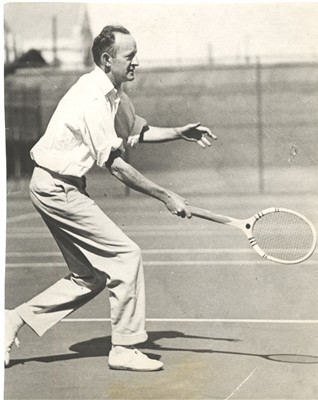
William Johnston (USA) |
the end of the early World Clay Court Championships
|
The
21 year old Frenchman Henri Cochet gainfully took advantage of their absence
however. Recently crowned French Champion he dominated all three of the
European clay court championships. At Wimbledon, the Australian Gerald
Paterson regained the title he’d lost some two years earlier.
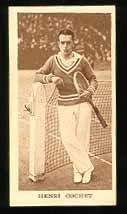
Henri Cochet in 1922 |
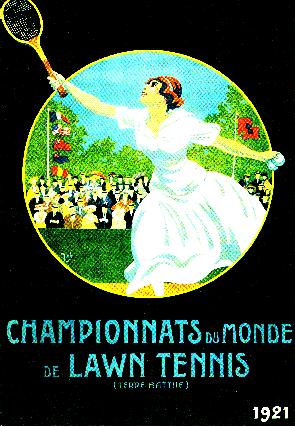 |
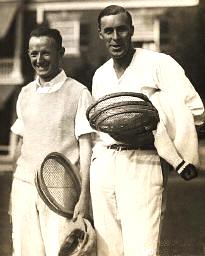
Johnston and Tilden, 1923 |
In 1923, the
Americans decided to come back out of the closet. Little Bill Johnston
returned to Europe with the young Francis Hunter. He swept aside everybody
before him taking the world clay court singles title in Paris and that
on lawn at Wimbledon a month later.
One would have thought that this was to be Little Bill’s year for the grand slam as 1921 had been for Tilden. His fate was not such a happy one however. On returning home he was crushed by three straight sets in the final of the American Championships by his eternal rival Big Bill and was never to be seen again in Europe. The repetitive nature in
which the Americans were winning in Europe had by now seriously started
to irritate the managers of the American Lawn Tennis Association (USLTA).
Whilst they were winning the two “World” Championships with relative ease
in Europe, their players had to fight hard to win their own domestic championship
and for the lesser title of Champion of America. To make matters worse,
other than those players representing their country in the Davis Cup, very
few Europeans were coming to Forest Hills.
|
| The whole issue turned into a turbulent argument at a meeting of the International Lawn Tennis Federation in 1923. The Federation had been founded in Paris in 1913. The Americans had never joined the organisation however and only attended as “observers”. They firmly stated at the meeting that they would never join until such time as Wimbledon gave up it’s title as the “World” Lawn Tennis Championship. It was of course impossible to seriously argue a case against them when the Americans were such a strong force in the game and were concurrently holders of all of the championships. It was agreed that Wimbledon would henceforward be known as “The Championship”. In the ensuing unrest the World Clay Court Championships in Paris were cancelled without being replaced. |
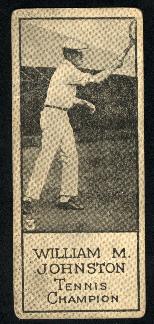 |
| No tennis tournament was to carry the title of “World” again. The Americans were happy since an American Champion on grass was now on an equal footing with a British Champion, also on grass. The clay court championships were simply forgotten. The last Olympic Tennis Championships for many years were played out in 1924 (tennis did actually finally return to the Olympic Games many years later in Seoul in 1988). |
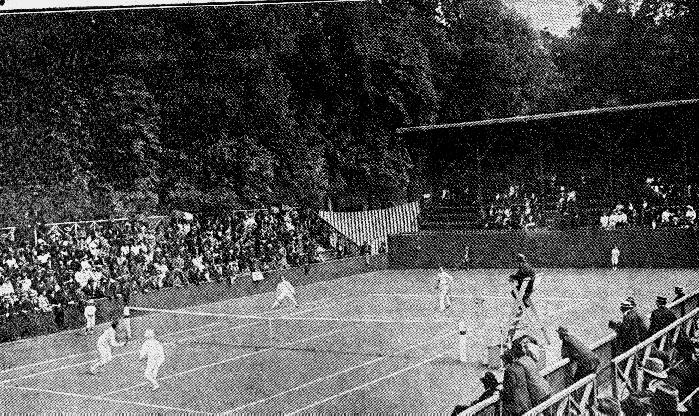
"La Faisanderie", at St-Cloud near Paris, where the tennis world championship on clay used to take place until 1923. |
| These changes
laid the foundations for the Grand Slam, which was in fact what the Americans
were really after. The Europeans came to consider the US Championships
as important as Wimbledon. This was demonstrated by Lacoste’s victories
at Forest Hills in !926 and 27 and by Cochet in 1928. During the thirties
the best players from Australia, Great Britain, France and even Germany
regularly made the voyage to America whether there was a Davis Cup competition
or not.
Another more indirect consequence of these changes was the creation of the Fifteenth International Lawn Tennis Championship in Paris, an event which was to become Roland Garos three years later following the victory of the French in the Davis Cup…..but then that’s another story…….. |
Previous
story: 1920-1926 Tilden and Johnston, the Davis Cup Kings
Next
Story: 1924 Vincent Richards, double olympic champion
Des idées, des remarques, des suggestions? E-mail
E-mail
Dernière mise à jour : 17
juillet 2001
Copyright BLANCHE NET communications.
Mars 2000.